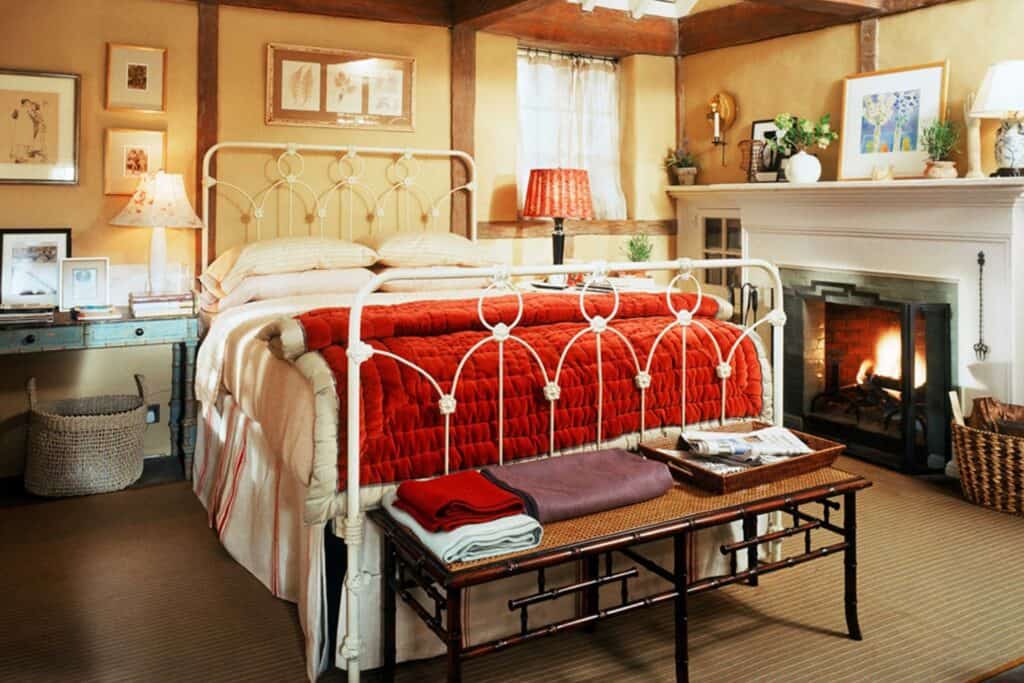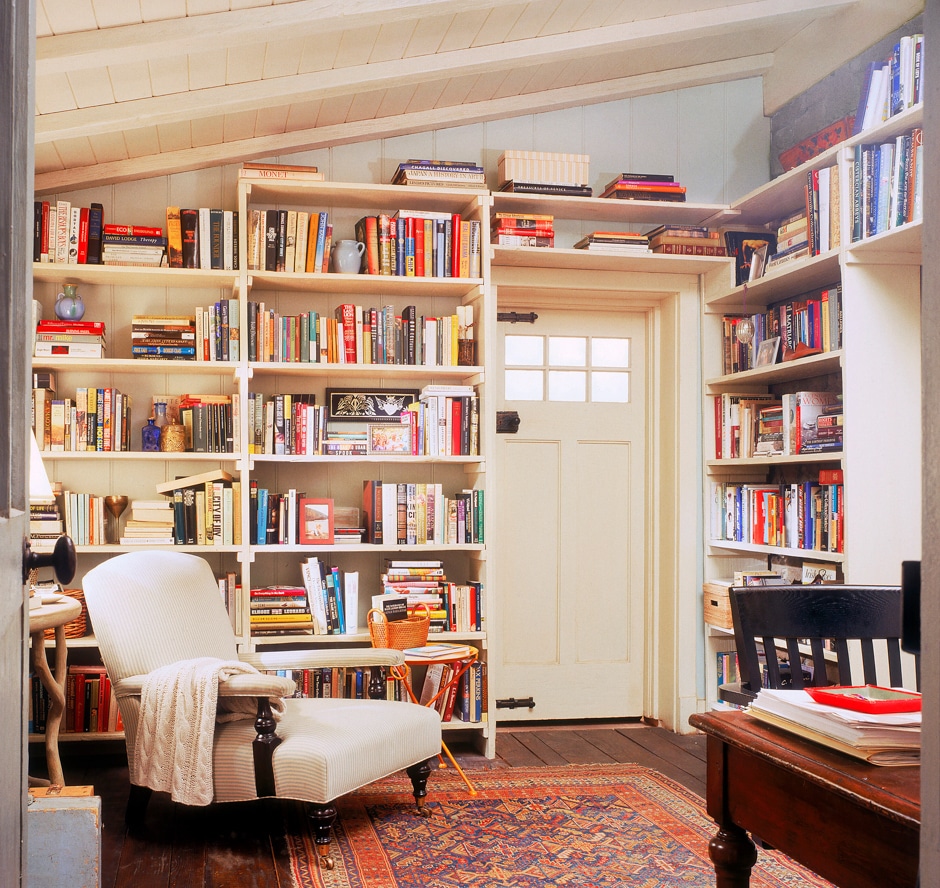The ideal English cottage didn’t exist, so producers built it.
This site contains affiliate links to products. We may receive commission for purchases made through these links. Price at time of publish date may change.
There’s no denying it: When the holidays roll around, one of the best things you can do is bundle up under a cozy blanket, grab a steaming cup of hot chocolate, and settle in for a movie night. There are endless Christmas movies to love—many of which have incredible homes as the backdrop—but there’s no denying The Holiday movie is up there with the best of the best.
Nancy Meyers’ 2006 rom-com was the perfect combination of funny and heartwarming. But we can probably all agree that outside of the cast, there was another star of the film: The cozy English cabin where Cameron Diaz stayed. Even though it was short on heat, it was heavy on design style, filled to the brim with lived-in charm. It was a visual feast of muted chintz, pastel shiplap, and so many hearths we lost count. If you find yourself as inspired by this perfect example of cottagecore as we are, then you need to keep reading for how they pulled the look together. (And how you can copy it for yourself.)
Behind the Design of ‘The Holiday’ Movie Cottage
It’s a story about contrasts, about what happens when these two women trade lives,” says Jon Hutman, the production designer of The Holiday, in which English rose Kate Winslet and Hollywood movie exec Cameron Diaz swap houses, fall in love (Diaz gets Jude Law; Winslet gets Jack Black—talk about contrasts), and fix their lives.

The room where Cameron Diaz’s character hid from the drafty English world—replete with painted brass bed, cozy quilt, and obligatory fireplace—was actually a studio in L.A.
To create Winslet’s world, the assignment was to find the quintessential English countryside home, to oppose Diaz’s sprawling, Spanish-revival California mansion. Hutman’s model was a National Trust historic property in Herefordshire, near the border of Wales, which was perfect but not available for use.
“The only way we could have it was to build it,” he says. So he did. The exterior shell was constructed in Surrey, outside of London (and has since been torn down). The interiors, an endless stream of aggressively cozy corners, were created on a soundstage in L.A. Our favorite is this one, a happy and balanced reading nook that you’ll want to settle into and maybe never leave.
Get the Look: ‘The Holiday’ Movie House Reading Nook

“I would vacation in this cottage. With all these books, this would be the perfect place to have no WiFi and no plans!”
—Drew
Bookshelves
“I’m a big believer in research, which basically means stealing ideas from real places,” says Hutman. To create the story of this room, an old place that’s been updated, he left in the supports under each shelf, called ledger strips. “That detail is the whole thing,” he says. “It tells you the history of the room.”
Books
“Bookshelves as they’re often done in movies is one of my pet peeves,” says Hutman. “Books are collected over time. I’m not into the color-coded thing, where people get books they’d never read.” Instead, this is a carefully assembled collection—an artful but chaotic jumble that looks like it took years to compile, as it would have in the character’s life. It makes the shelves, and the room, look “really well dressed,” says Hutman. “I am in no way embarrassed of these bookshelves.”
Accent Chair
Hutman sources English chairs—like this one—at a store called Hollyhock in West Hollywood. “It’s that colonial style, with the paddle arms and the little brass wheels on the feet,” he says. The shape recalls a chaise lounge. “You can really rest on it,” says Hutman.
Desk & Chair
The 19th-century antique writing table is closer in vintage to the armchair, but Hutman paired it with a school chair he painted black, establishing more of that contrast. “We were making classic shapes contemporary,” he says. “You understand with that black chair that you are not in an old professor’s house.” Hutman, who has designed four films for Nancy Meyers, is a big fan of writing tables, which unlike desks don’t hide the actor’s legs.
Rug
The off-white ceiling, walnut floors, and pale walls are a neutral backdrop for the furniture and decor—a connect-the-dots of color. Hutman chose a classic, worn (but not too worn) Persian rug with rich tones. “If you look at the dab of color in the bookshelves, it mimics that,” he says. “It lifts the room. From the red ashtray to the carpet to the books, your eye dances around the room.”